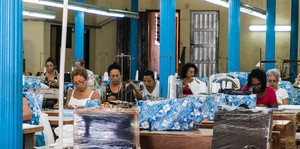- Clothes
- Bags
- Accessories
-
Inspiration
- Shoes
Human Cost of Fast Fashion: Who's Paying for Cheap Clothes?

More and more people are opening their eyes to the waste and pollution caused by the garment industry.
There’s another tragedy that isn’t talked about enough, though: the human cost of fast fashion.
When looking at a £5 price tag on a dress or a £2 top on SHEIN, have you ever thought “It sounds too good to be true”?
Well, that’s because… it is! To keep their prices so low, fast fashion brands hide a HUGE cost.
In this blog, we're zooming in on who's paying the price when we can shop new clothes for such low prices.
What is the human cost of fast fashion?
The human cost of fast fashion ranges from sweatshops (yes, they still exists) to child labour and modern slavery conditions – and more.
Most fast fashion companies get away with it by relying on dodgy supply chains. They outsource their clothes production to factories in developing countries where human rights are limited or downright non-existent for garment workers. For example, they can’t form unions to try and improve their conditions.
But what does this mean in practice?
Sweatshops
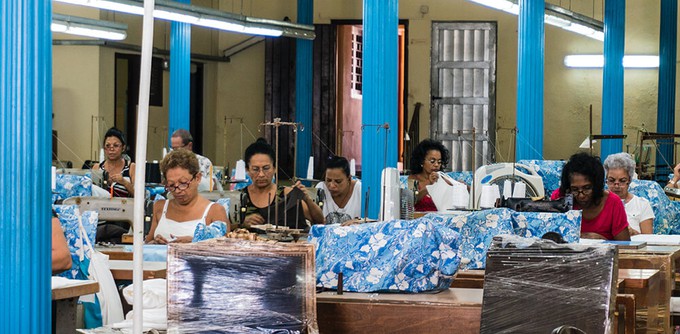
To keep their prices so low, many fast fashion companies use sweatshops in developing countries.
According to several reports, this includes big household names like Adidas, ASOS, Gap, H&M, Nike, Primark, and Zara… and don’t get us started on ultra fast fashion brands like SHEIN!
What happens in these sweatshops? What are the real fast fashion effects on workers?
- Low wages – Some brands boast about paying their garment workers minimum wage, but this is NOT the same as a living wage! The latter represents the bare minimum needed by a family to cover basic needs like food, rent, healthcare, and education. In most of those countries? A minimum wage tends to be half or even a FIFTH of a living wage. For example, in some SHEIN factories, workers make as little as 4 cents per garment
- Inhumane shifts – A +96-hour work week is normal for some garment workers in the clothing industry. They often work 10-12 hours a day (and even 16-18) 7 days a week. Take a moment to picture that!
- No overtime pay – These factories don’t even pay them for those additional hours. They usually set unrealistic daily targets, forcing workers to stick around for much longer just so they can meet them (and avoid getting into trouble)
- Verbal and physical abuse – This is still the reality behind fast fashion labour. And when 80% of garment workers are women, it’s no wonder it’s mainly gender-based violence and harassment
Health and safety
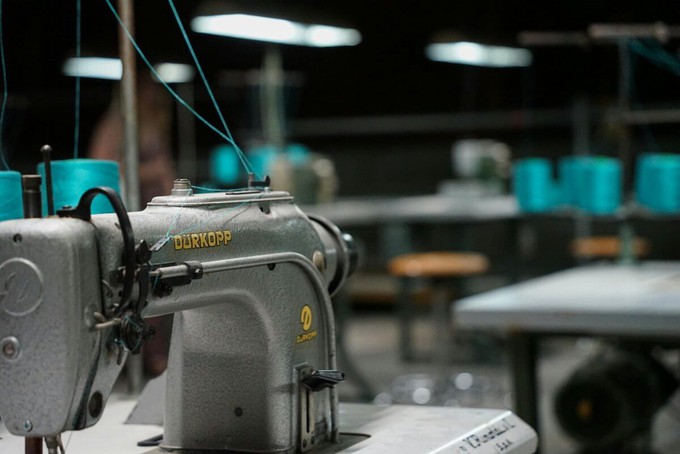
The human cost of fast fashion involves physical problems and risks, too.
- Dangerous fast fashion working conditions – Clothing production often relies on chemical-intensive processes. So, for example, garment workers (who are rarely given proper protection) end up touching or breathing in toxic chemicals, dyes, and substances. These can cause all kinds of health problems, like vomiting, higher risks of cancer, or disruption to their immune, endocrine, and nervous system. Due to problems like a lack of ventilation and unsafe buildings, fast fashion garment workers are often also at risk of fires and serious injuries too, including deadly ones
- Health risks for their communities – Because of the dumping often seen in the clothing industry, populations living near production or dumping sites are affected by the toxins and chemicals used in the industry too
Modern slavery conditions
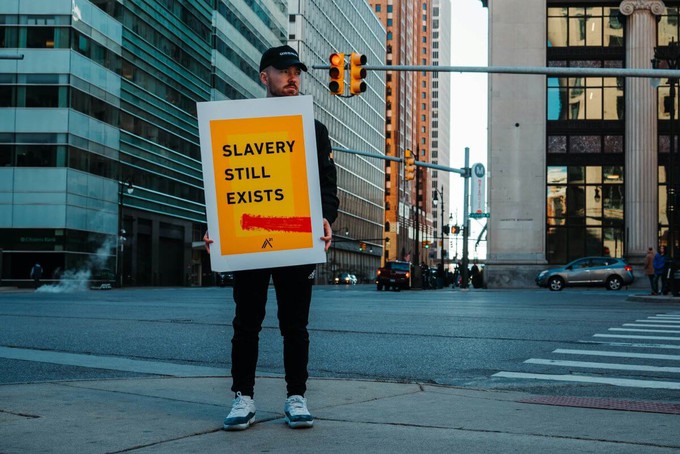
By now, you might be thinking “Why don’t garment workers leave those horrible and inhumane fast fashion factories?”
Simply because… they have no choice!
- Trapped in a vicious cycle – Because these workers don’t earn enough, they can’t change their situation (for example, by investing in education). Also, for women in some developing countries, it can be extremely difficult to find jobs in different industries
- Forced labour – On top of those dreadful practices, fast fashion is no stranger to forced labour (= work done under the threat of a penalty, that wasn’t this person’s choice, or that resulted from human trafficking), like in the Uyghur region in China
Child labour
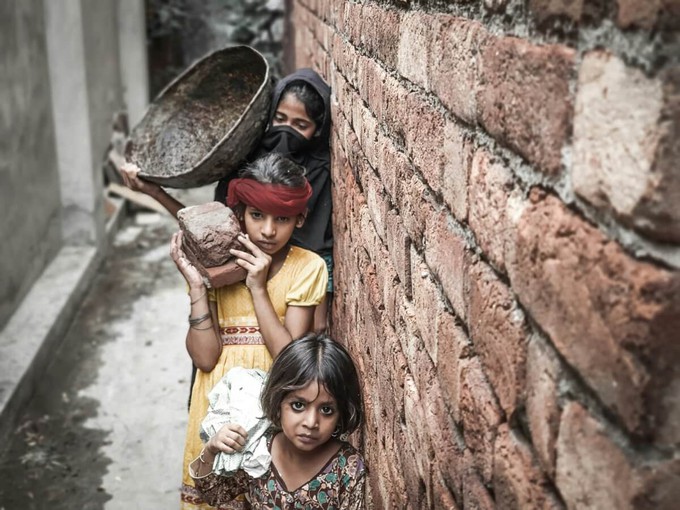
Sadly, there could be a child behind the fabric and garments you wear.
- Child labour in fast fashion – It can happen at any stage of the supply chain because it relies on unskilled or low-skilled labour, but it’s especially common in cotton farming
- A tragic solution – Sometimes, these children are lured in with fake promises. Some other times, it’s their families that are forced to take them with them because they’re not earning enough to cover their basic needs
The human cost of fast fashion is not getting better!
You might have heard of the Rana Plaza incident in Bangladesh, when over 1,000 garment workers died and 2,500 were injured because a sweatshop building collapsed.
That was in 2013.
And yet the fast fashion exploitation of garment workers hasn’t stopped being our reality: they’re still facing these inhumane conditions and risks, and they're even getting killed for protesting for a wage they could live from.
So, what can you do against the human cost of fast fashion?
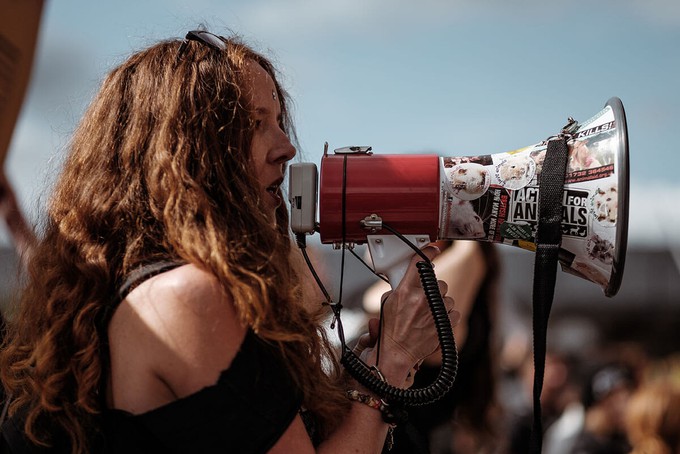
As you now know, there are so many fast fashion ethical issues and even though we need system change and as individuals we're only a really small player in that system, there are some things you could do to be part of the change:
- Follow our guide to ditch fast fashion
- Consider supporting organisations campaigning against the inhumane working conditions in the garment industry and fast fashion ethical issues in general
- Avoid sweatshops by looking for third-party certifications (like Fair Trade International, Better Cotton Initiative, or Fair Wear Association) when buying new clothes
- Vote with your money by investing in fewer, higher-quality garments that were made ethically and sustainably—not by workers trapped in modern slavery conditions
Out of our own frustration, we started Project Cece: to make it easier to switch to ethical fashion.
We brought hundreds of ethical brands in one place and added filters to narrow down your choices.
The human cost of fast fashion might still be high, but we can choose to stop funding it.
Found this helpful? Start receiving our tips and inspiration to make even more sustainable fashion choices.
Share our story
Related articles
Fast Fashion's Environmental Impact: Your Clothes' Real Cost
Low price tags, HIGH cost for the planet. Here’s a jargon-free overview of fast fashion’s environmental impact—and what YOU can do about it.
Do Sweatshops Still Exist in Europe & for Big Fashion Brands?
These factories aren’t as distant as we believe, neither in time nor space! Here’s the reality of sweatshops in Europe or behind popular high street brands.
Problems with Fast Fashion: Cheap Clothes, High Hidden Costs
From child labour to toxic dyes, there’s a high hidden cost behind cheap labels. Check out the problems with fast fashion and discover a sustainable solution.
Project Cece is a platform that collects ethical fashion from vetted brands and shops in one place. Browse ethical fashion for women and men and find items that fit your style, budget and values!

